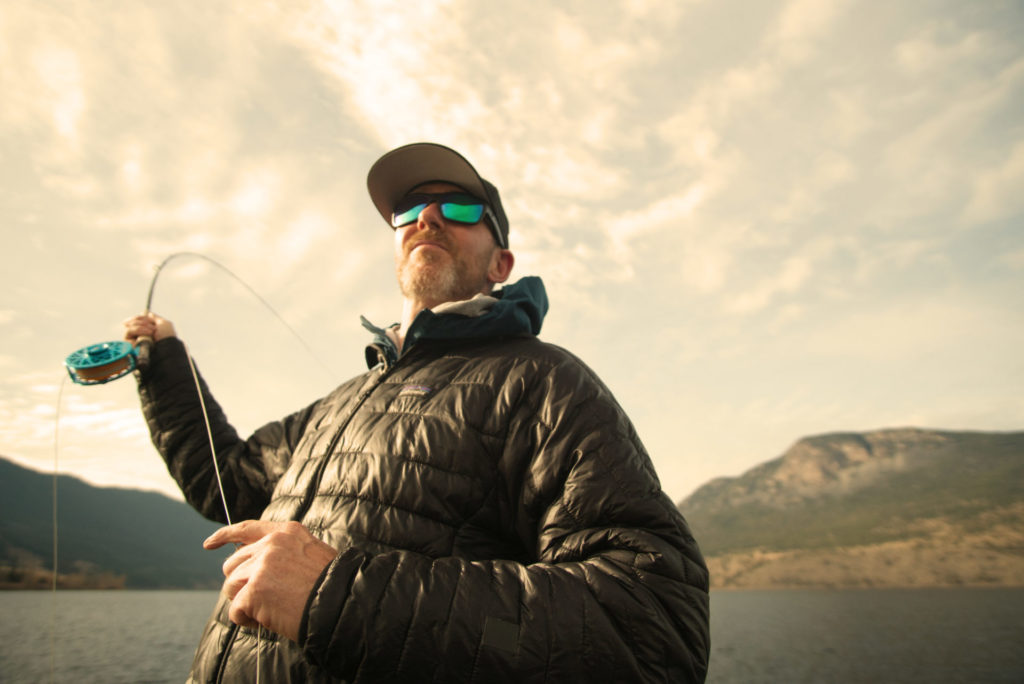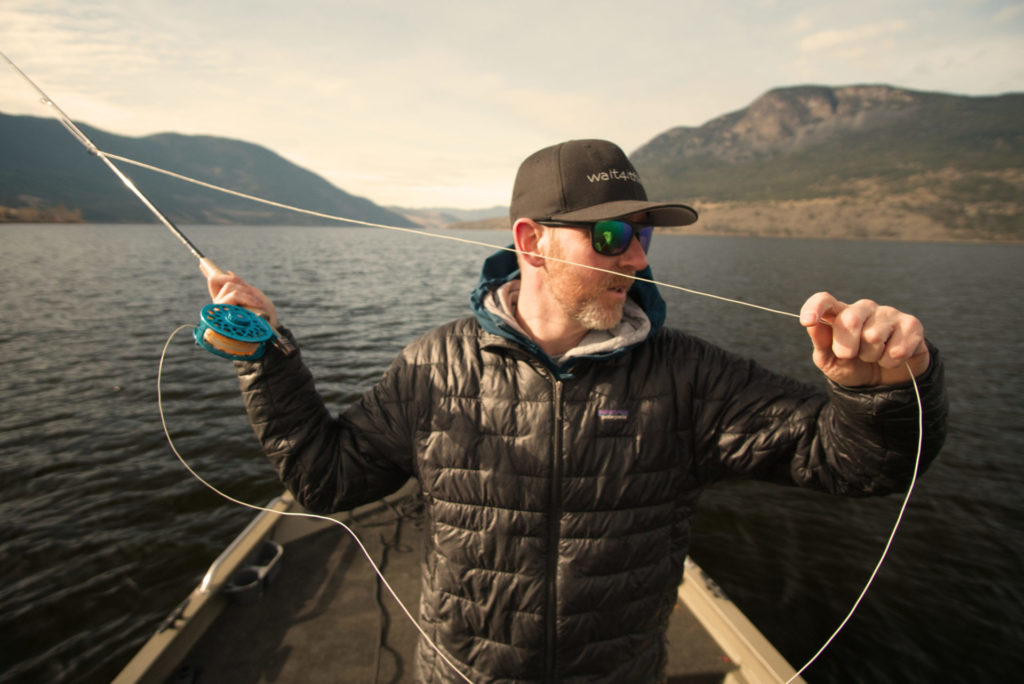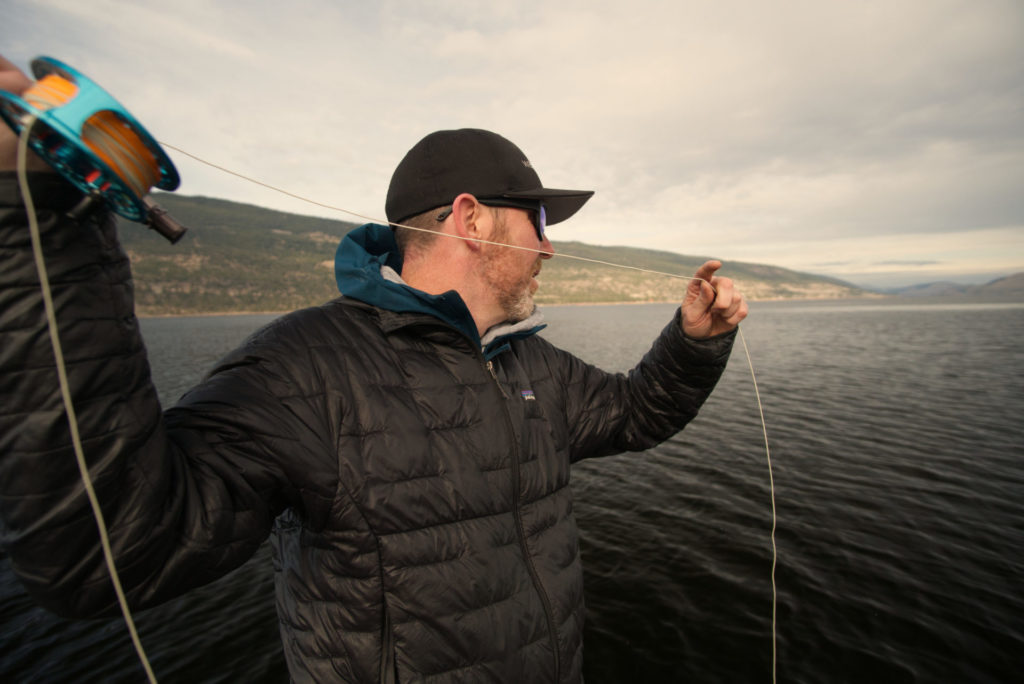I was fortunate to be introduced to fly fishing and fly casting at a very young age, somewhere around 1978 to 1979, to be exact. Of course, back then, the equipment was very basic, and most rods were constructed from fibreglass in that era. The actions were much slower, the components were basic, and the finishes were nothing like today’s equipment with graphite construction. The concept of shooting a fly across the water without any affixed weight was rather mind-boggling to me then, and I have to keep reminding myself that it still is now, to those who do not understand or practice this hobby on a regular basis.
Advertisement
When novice fly casters first pick up a fly-fishing combo, the first thing that surprises them is the overall light weight and responsive feel to the equipment. It’s at this very moment where the future of their fishing preferences may change dramatically, or the whole event can go to the gutter. The most common jump into fly fishing comes from an angler that has had some fishing experience with either spin fishing or bait casting. This is where the problem usually holds its immediate challenges. I will explain:
The word “cast” is where things can become complicated. A “cast” in regular fishing practices (spinning and/or bait casting) is when a rod is brought from quite far behind someone’s back and whipped forward with a brisk whip or stop, which obviously flings a weighted object, such as a lure, way out into the water. It’s this very motion that most people are familiar with and have heavily practiced. There are side whips, overhead whips, flips, quick jerks – just to name a few. Erasing these actions and completely putting away your idea of a “cast” is step one. When you are fly casting, the rod is holding the line up off the ground or water and delegating which way the line travels and how fast to travel. So, in theory, any strange whip or flick would send the fly line in the exact direction of where the rod tip was during the entire motion, or where it ended up pointing to. You don’t want your fly line heading in many other directions than in loops above the water. Yes, I know, fairly confusing to think about or read! So let’s go straight into the improving part.
Advertisement

Just like driving a vehicle for a new driver, the instructor will tell them about positioning their hands at 10 and 2 on the steering wheel. This is crucial with where your rod motion during your fly cast also stays. If you were standing up straight, and your head was 12 o’clock, the rod’s actions should tick tock between 10 and 2 within the air above you. The reason being is that it will stray past 10 and 2 as you speed up your cast and deliver more confidence with line travel. If your hands are briskly stopping at 10:00 on your front cast and 2:00 on your back cast, your rod will actually flex quite further and breach these parameters. That’s OK, its 10 and 2 that keep you remembering where to stop and load the most power from your rod design out towards your rod tip, which in turn delivers the travel message to your fly line. So, 10 and 2 is a great starting point for most fly casters during a regular false cast.

During this practice, it pays to look up and see where your rod is starting and stopping. Most will be surprised how far past these perimeters they are drifting. Once there is a relatively safe amount of confidence in the forward and back cast motions, things balance out and it’s a great feeling. It does take time though; eliminating that whip or jerk cast mentioned above takes some time and understanding at first. You’re just using the stroke of the rod forward and reverse to keep the line up, straight in the air and off the water or land. That’s really all this fancy motion is doing. It’s the prettiest part, and the identity of a controlled cast is what’s known as a tight loop. The turning point of getting all the way here is back to the first part of this article. It’s where “the cast” creeps back in and quickly destroys the production – destroys the loop. It’s where most newer fly casters get frustrated and it’s completely normal at first. Here’s the layout issue:
Advertisement
After the tick-tock motion at 10 and 2 is somewhat embedded and starts to feel more natural, the upcoming delivery of the fly line to water is at the end of the cast to perform the “shoot”. It’s the last cast of the entire procedure, which dictates where your fly will go, how your fly will land and if you will be spooking or catching that day on the water. The key is not performing any extra motion or thrust on your final cast. This is so important. Seriously, the trick is just not building up or heavily anticipating this big final cast to shoot everything away from you, because this is when your rod angle will change. The “cast” motion will creep back into the procedure and your line will lose its momentum trying to follow its new, suddenly designated path. It’s the most common mistake, without a doubt. The key is just letting the line go from your fingers on your final cast and just following it slowly down at the end of your cast with the rod tip. It takes some time to reprogram your brain that there’s no final launch required at the end of this beautiful fly cast to make things work. Just let it go on the forward motion during your last cast.
But all of this requires some brain training, especially if you’ve handled spinning and casting rods for quite a long time. Practicing letting the fly line go on either the forward or back cast during its motion away from your body will help install this maneuver naturally. It pays to be able to cast on your back cast most definitely and is the mark of an angler that understands line motion. Back cast casting becomes very helpful on a crowded boat, during an annoying or unsafe wind, chasing risers on the dry or in a spot where the trees or the bank won’t let you play naturally. To bundle all of this up into one, if you can cast a fly on your back cast, you’ve nearly perfected your loop timing and rod angles.
Further improving? Kicking your cast into hyper speed or adding turbo is usually the next step after the basics have been perfected. This is called the single or double haul and is only somewhat obtainable from a caster that understands and is well practiced with the above-mentioned motions and techniques. I will be very clear and say that the double haul fly cast is not required to enjoy the lifelong journey of fly fishing and catching fish. I’ve released a few instructional videos in the past on this technique and it definitely raises eyebrows. In a whole shot, the double haul fly cast will nearly double your line speed, cut through forward wind situations and help punch larger flies and or leader configurations across the water. It is the next level in single-hand fly casting undoubtably, and may cause some grief during the practice of, even for very seasoned fly casters.

When the basic timing and false casting maneuvers are sound, the next option, and I mean option when I say it, is to manipulate the line hand. The line hand’s use up to this point was just to pinch or open up the grip on the fly line during feeds and ultimately on the line cast. This hand can jump into the action sevenfold, but starting to train it to do incredible things while your casting hand is already doing incredible things at the same time can take serious practice. For sure. Ready? By pulling the line away from the first eyelet on the rod at the exact moment you are bending the rod is a single haul. This is hauling. Think about it for a second: the motion with both hands at the same time is almost like the motion of opening up a newspaper or spreading apart window curtains. When the rod is bending and you’re pulling the line at the same time, you’ve added an instant turbo to things. The rod will bend more, which causes more load to the arc and, ideally, immediately picks up the line speed. Yes, this action can be performed on the front and back cast simultaneously, which in turn dramatically speeds up your cast. It’s not just that easy though. The real challenge, which can be compared to patting your head and rubbing your stomach in a circle at the same time, is the final part of the equation during a double haul fly cast. What is that? Well, that’s the micro move of feeding the line back up towards the first eyelet between each haul, or pull in the line. This part of the equation has to happen to ensure that there’s line to pull on the next haul, and is one of the trickiest parts to the equation. It is a lot to read and picture all at once, but completely doable and learnable in just a few ventures out. I always recommend some non-water, non-fly practice with such demanding techniques. Your backyard or a nearby park is the best spot to try hauling your cast, and definitely do so without a fly tied on at first.
Something to always remember: all in all, the majority of challenges in the beginner to novice levels of fly casting is related to the back cast and how it is pushed forward. This, again, is where ridding of the traditional cast or throw motion dramatically improves the entire procedure from start to finish. Many fly instructors I know tell their students to start out by watching both sides of your cast. Ideally, programming your brain to know what’s happening by how it feels in your hand slowly happens with time. After a few solid seasons of fly casting, the need to see what’s happening in the air just goes away, as your hands will tell you by feel where everything is at.
Lastly, I’ll leave you with a few things on a short list that some already know, some forget or some will soon learn about with owning and mastering fly fishing equipment:
- Stretch your fly lines every time you go out. A stretched fly line casts and lays best.
- Take the plastic off of your cork handle immediately after purchasing. Don’t be that person.
- Make sure your line weights match you rod weights. Don’t settle for unmatched equipment unless you plan on trolling your life away.
- A dirty, sandy boat floor will eventually damage fly line when you’re stepping on it. Exterior carpet on boats helps save fly lines.
- Make sure your drag is backed all the way off your reel and you put away your equipment bone dry at the end of the season. (Really, this should be all the time.)
- Most rods that break on fish were actually bruised or damaged before, most of the time in transport. Keep your graphite protected.